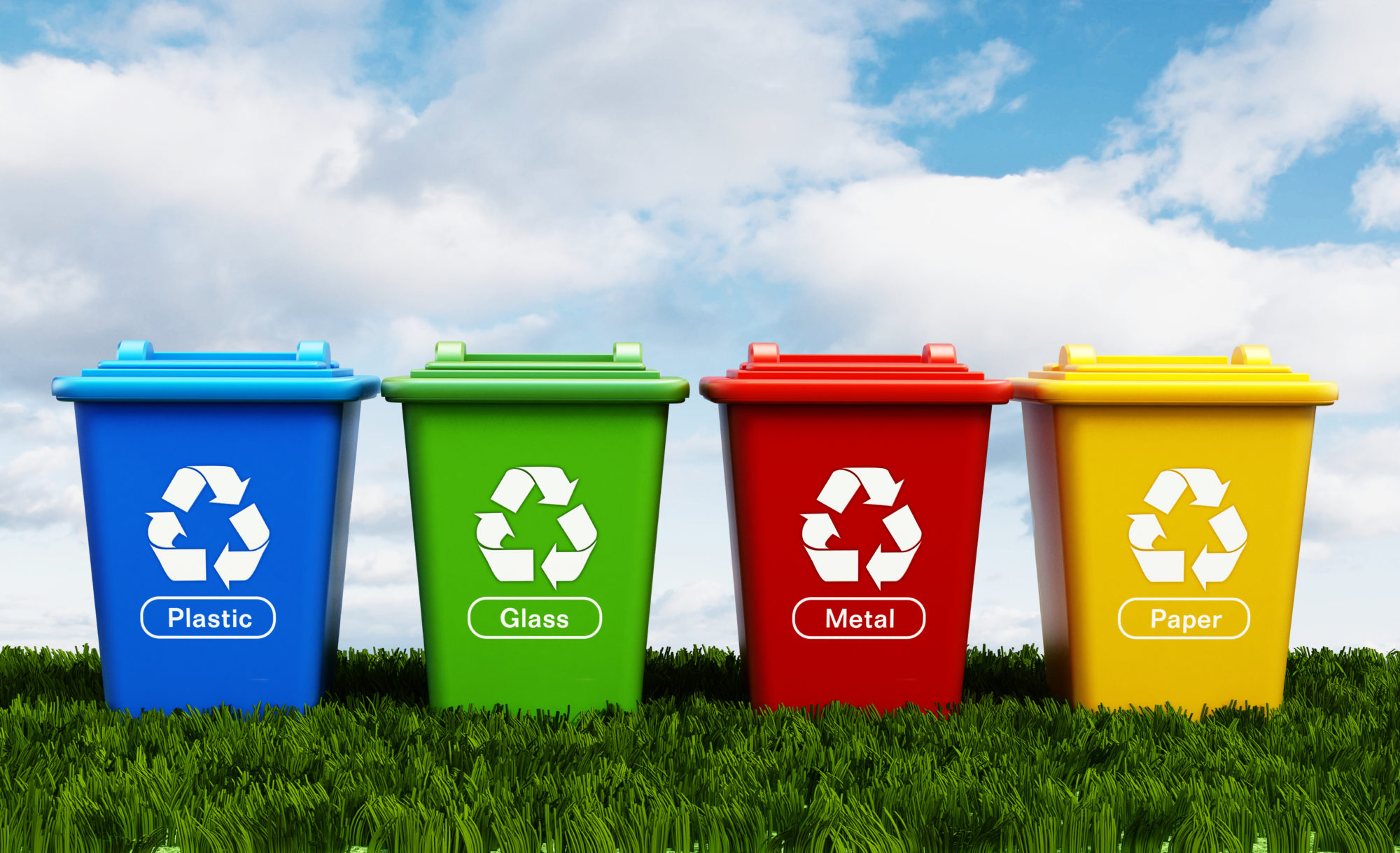Waste reduction refers to the process of minimizing the amount of waste generated in society, businesses, or individual households. It involves reducing the production of waste materials and finding ways to use resources more efficiently to prevent unnecessary disposal. Waste reduction strategies can include recycling, composting, reusing items, and implementing practices that prioritize the reduction of excess packaging or materials in manufacturing processes.
Overall, waste reduction aims to conserve resources, minimize environmental impact, and promote sustainability. It encompasses a broader approach compared to recycling, as it focuses on preventing materials from becoming waste even before they enter the recycling process. This involves reusing items like plastic and glass containers, opting for more durable products, and embracing reusable alternatives such as dishrags instead of disposable paper towels.
Additionally, donating various items, ranging from office equipment to eyeglasses and clothing, helps decrease overall manufacturing demand. Choosing products that substitute hazardous materials with biodegradable ingredients not only reduces pollution but also minimizes waste. Overall, waste reduction offers numerous environmental advantages, including increased production and usage efficiency leading to reduced energy consumption and pollution, preservation of natural resources, and the adoption of less hazardous materials in products.
Waste reduction also translates into economic benefits by saving costs. Implementing waste reduction practices means using fewer materials and less energy. Instead of following the traditional cradle-to-grave approach, a cradle-to-cradle system, also known as industrial ecology, is embraced. In this system, products are not treated as disposable after a single use; instead, they are circulated for further utilization. This approach minimizes the need for material disposal or replacing product components, thus enhancing resource efficiency and reducing expenses.
In the context of discussing waste reduction strategies, it is essential to consider the roles and responsibilities of various stakeholders, including individuals, businesses, institutions, organizations, municipalities, and government agencies. To provide a comprehensive understanding of waste reduction approaches, let’s examine the ways individuals can contribute to this cause:
- Reusing products:
One significant method through which individuals can practice waste reduction is by engaging in the reuse of products. This can involve various actions, such as reusing file folders multiple times before disposal, instead of discarding them after a single usage, or opting to refill water bottles instead of continuously purchasing new ones. By embracing these practices, we can effectively minimize waste generation. - Using products more efficiently:
Another way individuals can contribute to waste reduction is by utilizing products more efficiently. For instance, when photocopying documents, they can choose to use both sides of a single sheet of paper, thereby reducing the overall paper consumption and consequently, waste generated. This practice promotes a more sustainable approach to product usage. - Donating or exchanging products:
A valuable method to minimize waste is by donating or exchanging items that may be deemed useless by one party, yet potentially useful for another. For example, a chair manufacturing company might not find any internal use for the leftover upholstery scraps after recycling the main components of used chairs. However, by donating or exchanging these materials with other organizations or individuals who can utilize them, the company can prevent unnecessary waste and promote resource sharing. This practice encourages a circular economy and fosters sustainability.
What is Recycling:
Recycling is the process of converting waste materials into new products or reusing them in their original form, thus reducing the consumption of raw materials and energy. It involves collecting, sorting, and processing used materials to create new products or to manufacture items that can be used again. It contributes to a more sustainable and environmentally friendly approach to waste management.
There are several types of recycling, including:
- Mechanical recycling: This process involves breaking down materials into their basic components, such as melting plastics or shredding paper, and then reusing them to create new products. Examples include recycling plastic bottles into new bottles or shredded paper into cardboard packaging.
- Chemical recycling: Also known as advanced recycling, this process involves breaking down materials at a molecular level using chemical or thermal processes. This allows for the recovery of raw materials and the production of new products. Examples include converting plastic waste into its original monomers or chemical feedstocks for reuse.
- Biological recycling: This process, also known as composting, involves breaking down organic materials, such as food scraps and yard waste, through natural biological processes. The resulting compost can be used as a soil amendment to improve plant growth and soil health.
- Closed-loop recycling: This type of recycling involves reusing materials within the same product category. For example, recycling aluminum cans into new aluminum cans or glass bottles into new glass bottles.
- Open-loop recycling: In this process, materials are recycled into different product categories. For instance, recycling plastic bottles into synthetic fibers for clothing or cardboard boxes into particleboard.
Recycling offers numerous benefits, including waste reduction, resource conservation, energy savings, pollution prevention, and climate change mitigation. By promoting recycling and implementing effective recycling systems, we can reduce our environmental impact and contribute to a more sustainable future.
Environmental Protection Agency
The Environmental Protection Agency (EPA) emphasizes waste reduction and reuse as primary objectives in its solid waste management hierarchy, preceding recycling, composting, waste-to-energy, and landfilling. Numerous governments and businesses have adopted this waste reduction approach. To support this initiative, the EPA provides a free, all-encompassing waste reduction program for businesses, organizations, and municipalities.
Known as Waste Wise, this program offers educational and technical resources to assist in the development, implementation, and evaluation of tailored waste reduction activities. Through Waste Wise, participants can establish and manage a versatile waste reduction program catered to their specific requirements. Within the purchasing departments of organizations, incorporating waste-reduction strategies can involve various approaches. These include:
Minimizing product usage: Encourage double-sided printing in offices to optimize paper consumption.
Opting for rental or leasing options: Instead of buying equipment like photocopiers, consider leasing to avoid acquiring outdated or hazardous devices that may need disposal.
Prioritizing remanufactured, rebuilt, or refurbishable products: These options often have a lower environmental impact compared to new products.
Choosing more durable goods: Higher-quality items generally have a longer lifespan, reducing waste generation.
Selecting products made from nonhazardous materials: These materials are safer for users and more suitable for disposal in landfills.
Preferring returnable, reusable, or refillable products: For example, utilizing reusable transport containers to minimize waste.
Purchasing in bulk: This approach can lead to reduced packaging waste and lower overall resource consumption.
Selecting products that reuse packaging or have minimal packaging: Reducing packaging waste is crucial for a sustainable supply chain.
Sharing and reusing resources within the organization: Implementing an internal exchange program for computer equipment and office supplies can prevent unnecessary purchases and promote resource efficiency.
Advantages of Recycling
- Environmental preservation: Recycling reduces the need for extracting raw materials from the earth, which helps preserve natural habitats and ecosystems.
- Energy conservation: Manufacturing products from recycled materials typically requires less energy compared to producing them from virgin materials, reducing overall energy consumption.
- Waste reduction: Recycling helps decrease the amount of waste that ends up in landfills and incinerators, contributing to a cleaner environment.
- Resource efficiency: Recycling allows for more efficient use of limited resources, as materials can be reused multiple times instead of being discarded after a single use.
- Job creation: The recycling industry generates employment opportunities in collection, processing, and manufacturing sectors.
- Cost savings: Recycling can save money for households and businesses by reducing waste disposal costs and potentially generating revenue from recyclable materials.
- Climate change mitigation: By reducing energy consumption and greenhouse gas emissions associated with raw material extraction and waste disposal, recycling contributes to the fight against climate change.










